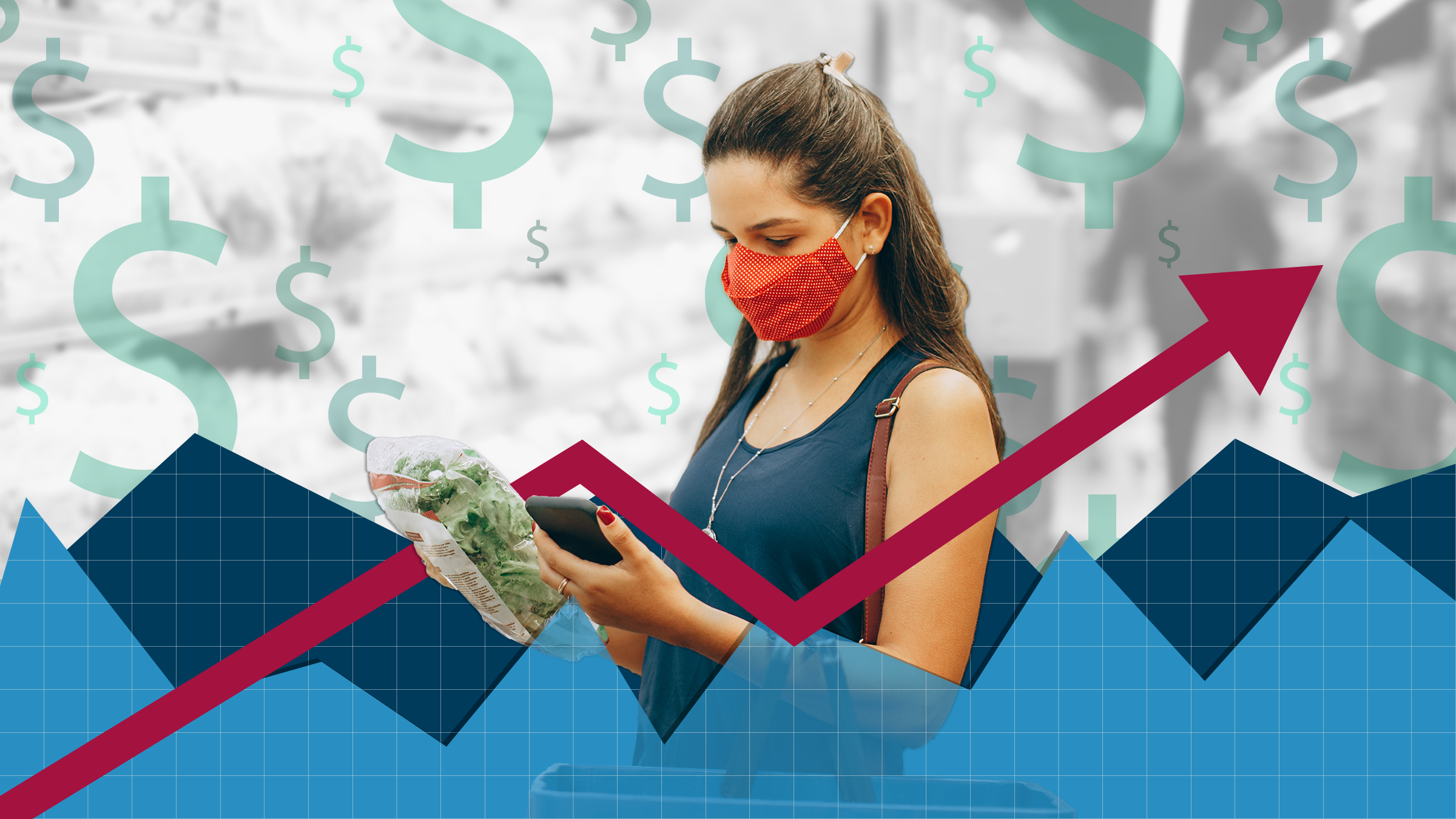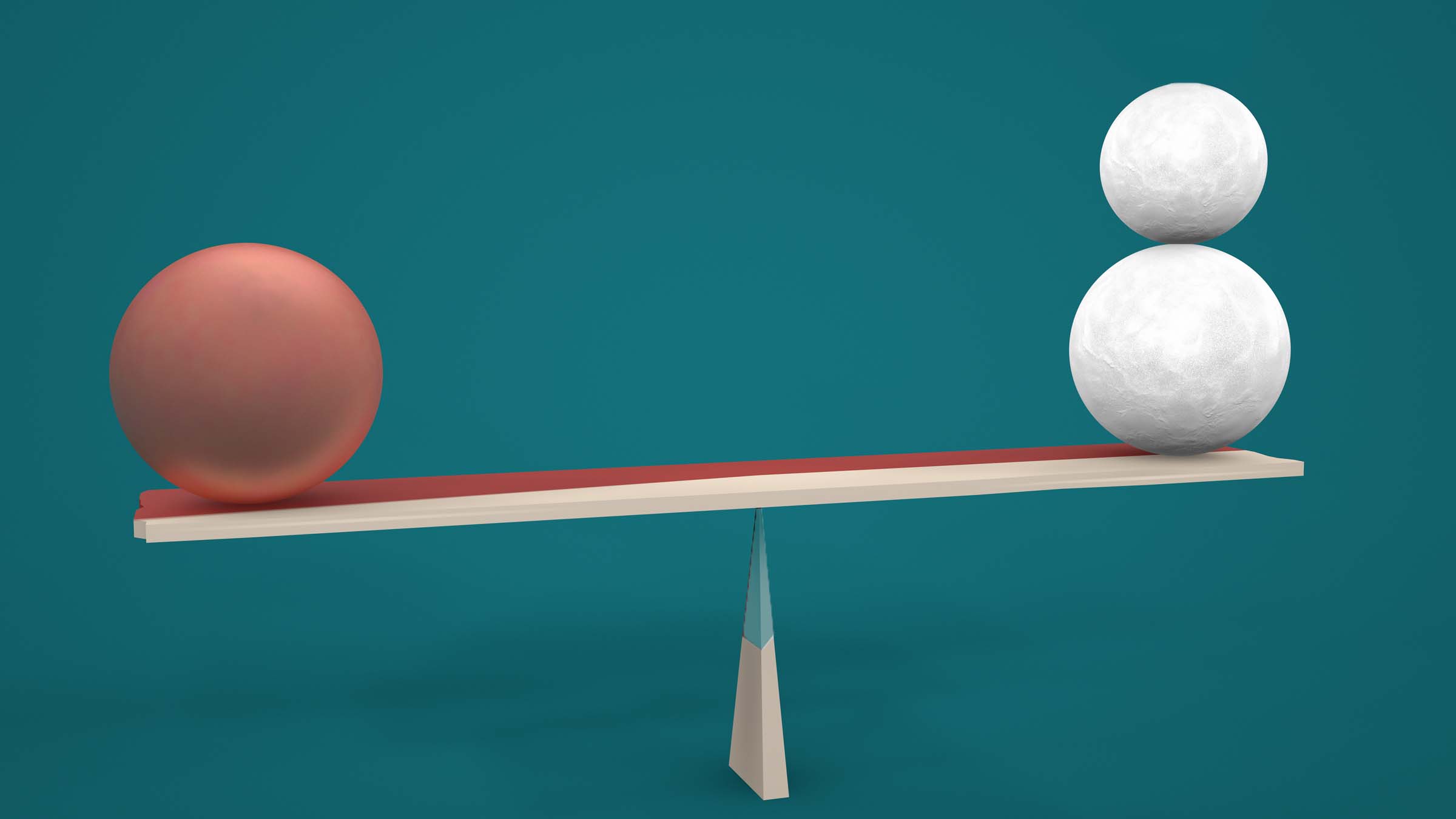
James Bullard President, Federal Reserve Bank of St. Louis
As part of our set of companion articles considering the costs of inflation, the Minneapolis Fed invited Bullard to discuss his work on the topic and how it informs him as a policymaker.2
Intuitively, of course, consumers don’t like to see prices going up. But that’s just the most obvious in a chain of effects. How do you think about the ways inflation truly does its damage over time and imposes a cost on society?
It's a great question. The “welfare cost of inflation” literature has two components. One is the pure money-demand component: When you're holding money, you're holding something that doesn't pay interest and you could be doing something else more productive with that asset. Those kinds of models generally come up with a moderate-to-low welfare cost of inflation.
But there are other models that have other dimensions on which inflation impinges on economic performance—let’s say on long-run growth, or interactions through the tax code, or other types of distortions. And if you look at models that do those kinds of things, you're going to get really high welfare costs of inflation. I think that's why, for the American public but also worldwide, inflation is not liked by the man on the street. They get mad about it because it does mess up economic performance.
The friendly competition in the academic world to measure the welfare cost of inflation goes back 50 years, if not further, to Milton Friedman and the demand curve for money. As you say, it has oscillated between, “It’s not that big a deal,” to “Actually, it’s a lot.” How has your own view evolved?
The analysis that probably kicked off the modern era on this question is by Martin Bailey in 1956. And then Robert Lucas wrote this paper in 2000 in Econometrica that was rationalizing what Bailey said. That [body of work calculates] the area under the money demand curve as an approximation of the welfare cost of inflation. Peter Ireland has a paper in 2009 that goes further on this, and Serletis and Xu have a new paper in the JEDC (Journal of Economic Dynamics and Control).
My own take is that the area under the money demand curve is dramatically understating the welfare costs. That’s why societies are so anti-inflation: Because that analysis isn't right. One place to look is papers by Guillaume Rocheteau and Randy Wright and related literature. Everything looks the same as it is in the Lucas paper, except that they've got the micro-foundations of money, and when you calculate the welfare cost of inflation it's much higher.
To me, that accords with the “politics” of inflation, where the man on the street really doesn't like inflation and finds it costly, even though in some models it seems like it shouldn't be.
So there’s something there, when you talk to the average person who is experiencing inflation, that some of the models have not necessarily picked up: That gut sense that we need to decipher why people dislike it so much.
On one level, it's very simple: I would like my wages to go up and all the prices to go down so I can afford more goods and services. We're all sort of offended if the prices of our favorite products or our favorite services go up faster than our wages and we have to cut back on those particular goods or services. It’s a contest between wages and prices.
But I think the literature brings out deeper issues behind that: What is the role of money really? When you have a higher rate of inflation, how is that impinging on the ability of money to solve a particular problem in the economy or fix a friction that would otherwise exist in the economy?
Do you think we, as a general public, have lost our sensitivity to the fact that inflation imposes a cost because we have had decades with such consistently low inflation in the United States?
Yes. My story about what happened is that there's a heck of a lot of inflation in the ’70s. In that era, there was high and volatile inflation, and the surprise was that you didn't only get inflation. You also got volatility in the real side of the economy: four recessions in about 13 years between the late ’60s and the early ’80s.
Then after that, inflation stabilized and we kind of took a different approach to inflation: Let's keep it low and stable. Along with lower and more stable inflation, we got very long expansions in the 1980s and 1990s, recently before the pandemic and, to some extent, even during the 2000s. I think that convinced everybody that you're better off with low and stable inflation.
Now low and stable inflation has been going on for such a long time that maybe people have forgotten a little bit, although there are always examples around the world. Turkey is an example today, and Venezuela recently. You can always point to somewhere in the world where this process has gotten dramatically out of control and it's not good for the citizens living in those societies.
What happens at, let’s say, 5 percent inflation? We’re not talking hyperinflation, but within the realm of reality. What happens to the role of money, and how can we help non-economists think about that phenomenon?
The paper I have with Steve Russell on this did a joint analysis of capital taxation and money and inflation. We did a calibration of that, and we found that it was kind of one-for-one: A 1 percentage point increase in inflation would be equivalent to a 1 percentage point decrease in consumption, forever.
That paper is one of the costliest calculations out there that I know of, but that's because we had capital in the model, and capital taxation is not adjusted for inflation. Because of that, basically every time you raise inflation, you're changing capital taxation in the economy. What we are trying to do [to achieve economic growth] is accumulate capital in the economy so we can be more productive and get higher real wages. Inflation is interfering with that process by inadvertently taxing capital.
You can index a tax code [to inflation], but that doesn't really happen. It's still imperfectly indexed today, and sometimes intentionally so. I just saw an article in the Wall Street Journal that was talking about aspects of the tax code that aren't indexed to inflation and why we as individual taxpayers should take heed because the real tax rates are changing as you get this burst of inflation that we've experienced in 2021 and into 2022.
How does your background working on these questions as a research economist help you now that you are in a policymaking role?
I think it's really essential to how I approach policy and I wish this literature was better known across economists generally, because the policy discussion usually focuses mostly on labor market issues and talks in kind of simple terms about whether inflation is going to enhance growth, or not, on a very short-term basis. I think the true issues around this are deeper than that. And I think it's important to have some background and some confidence that you understand where the literature is on those dimensions.
[With respect to the relationship between inflation and unemployment] most people in the profession gave up on the idea that the Phillips curve had any long-run slope to it—the consensus is that the long-run Phillips curve is vertical. In that case, in the end, you're really not going to change the labor market outcomes through some alternative approaches to inflation policy. There may be some short-term interaction there, and that certainly is something we have to be cognizant of as policymakers. But I think it's important to keep in mind that in the long run, you're not going to get much action [on unemployment] one way or the other with respect to inflation.
Guarding against inflation and the costs that we've been talking about here remains important—as does guarding against deflation, which you've written about as well. If there's any advantage to a having bit of inflation, it would be avoiding a deflationary environment.
When I became president [of the St. Louis Fed] in 2008, the world turned upside down with respect to these issues and the welfare-cost-of-inflation literature faded, I would say, relative to what it was up until then. Inflation below the 2 percent international standard targets became the new issue. This issue has been around in Japan for 25 years, it is prominent now in Europe and, to a lesser extent, it has been an issue in the United States in the decade before the pandemic.
And that raised the question of: If you're going to have an inflation target, you should hit the inflation target. If you're not, then you're losing credibility with respect to that target. You could argue maybe the target should be 1 percent or 0 percent, but once you set a target, you should be credible in hitting that target.
And that's why I felt that we should emphasize how to do policy in that environment and how to avoid the Japanese outcome, where they ended up with very low nominal interest rates and very low inflation for a very long time with unknown consequences for the real economy in Japan.
There's been a lot of attention paid in recent years to decomposing the unemployment rate—looking at different segments of the population, different demographic groups. It seems like there is increasing interest in similarly understanding the disparate impacts of inflation. I wonder what value you see to that approach, as a policymaker?
I don't think that literature has really come to a clear conclusion. My former colleague here, Yi Wen, has a paper with liquidity and heterogeneous agents. And the welfare cost of inflation was extremely large because the households are holding the money, trying to insure themselves against idiosyncratic risk.
When you have high inflation or even moderate inflation, you're making that asset less good as an insurance hedge against those shocks. And you're making these poor people much worse off because the thing that they're trying to hold to insure themselves is not a very good asset anymore. That kind of punches you in the face about how costly inflation could be for the lower part of the income distribution.
I think also people have said for years, and it is an important point to make, that inflation is just a regressive tax. It's not Bill Gates or Warren Buffet or Jeff Bezos who are going to have problems with inflation. It's going to be the people who are really the cash users—the unbanked, the poorest segment of society who are using cash most intensively, and high inflation is making that a worse asset for them to be holding to try to smooth out some of the shocks in their personal lives.
References
President Bullard shared the following list of academic papers for further reading, and to represent the work he draws upon for his insights on this topic.
- M.J. Bailey, 1956, “The welfare cost of inflationary finance,” Journal of Political Economy, 64(2), pp. 93-110; https://doi.org/10.1086/257766.
- J. Bullard, 2010, “Seven faces of ‘the peril,’” Federal Reserve Bank of St. Louis Review, 92(5), pp. 339-352; https://doi.org/10.20955/r.92.339-52.
- J. Bullard, 2009, “Commentary on Inflation and welfare in models with trading frictions,” in Monetary Policy in Low-Inflation Economies, D.E. Altig and E. Nosal eds., pp. 117-120, Cambridge University Press; https://doi.org/10.1017/CBO9780511605475.009.
- J. Bullard and S. Russell, 2004, “How costly is sustained low inflation for the U.S. economy?” Federal Reserve Bank of St. Louis Review, 86(3), pp. 35-67. https://doi.org/10.20955/r.86.35-67
- A. Erosa and G. Ventura, 2002, “On inflation as a regressive consumption tax,” Journal of Monetary Economics, 49(4), pp. 761-795; https://doi.org/10.1016/S0304-3932(02)00115-0.
- M. Feldstein, 1999, “Capital income taxes and the benefit of price stability,” in The Costs and Benefits of Price Stability, M. Feldstein ed., ch. 2, University of Chicago Press.
- M. Feldstein, 1976, “Inflation, income taxes, and the rate of interest: A theoretical analysis,” American Economic Review, 66(5), pp. 809-820; http://www.jstor.org/stable/1827493.
- M. Feldstein, J. Green, and E. Sheshinski, 1978, “Inflation and taxes in a growing economy with debt and equity finance,” Journal of Political Economy, 86(2, pt. 2), pp. S53-S70; https://doi.org/10.1086/260694.
- P.N. Ireland, 2009, “On the welfare cost of inflation and the recent behavior of money demand,” American Economic Review, 99(3), pp. 1040-52; https://doi.org/10.1257/aer.99.3.1040.
- R.E. Lucas, Jr., 2000, “Inflation and welfare,” Econometrica, 68(2), pp. 247-274; https://doi.org/10.1111/1468-0262.00109.
- G. Rocheteau and R. Wright, 2009, “Inflation and welfare in models with trading frictions,” in Monetary Policy in Low-Inflation Economies, D.E. Altig and E. Nosal eds., ch. 4, pp. 89-116, Cambridge University Press; https://doi.org/10.1017/CBO9780511605475.008.
- A. Serletis and L. Xu, 2021, “The welfare cost of inflation,” Journal of Economic Dynamics and Control, 128, https://doi.org/10.1016/j.jedc.2021.104144.
- Y. Wen, 2015, “Money, liquidity and welfare,” European Economic Review, 76, pp. 1-24; https://doi.org/10.1016/j.euroecorev.2015.01.012.
Endnotes
1 Neither this article nor the research cited necessarily reflects the views of the Federal Reserve Bank of Minneapolis or the Federal Reserve System.
2 This interview has been edited for length and clarity.
Jeff Horwich is the senior economics writer for the Minneapolis Fed. He has been an economic journalist with public radio, commissioned examiner for the Consumer Financial Protection Bureau, and director of policy and communications for the Minneapolis Public Housing Authority. He received his master’s degree in applied economics from the University of Minnesota.






